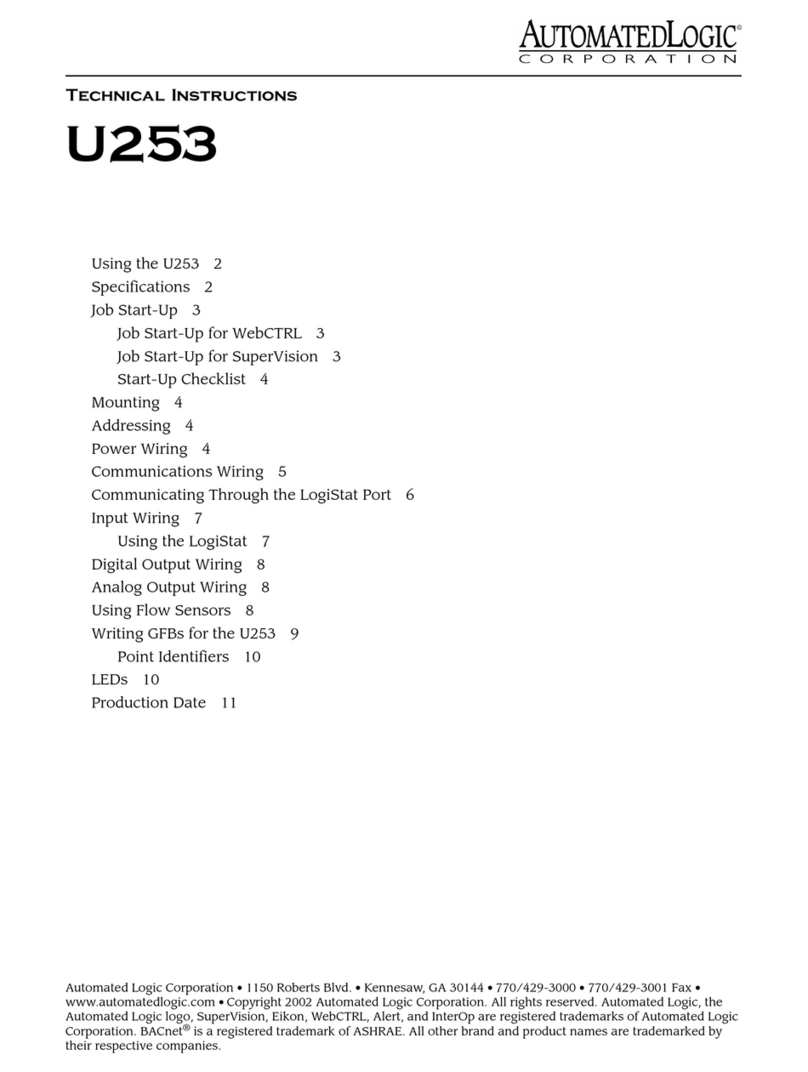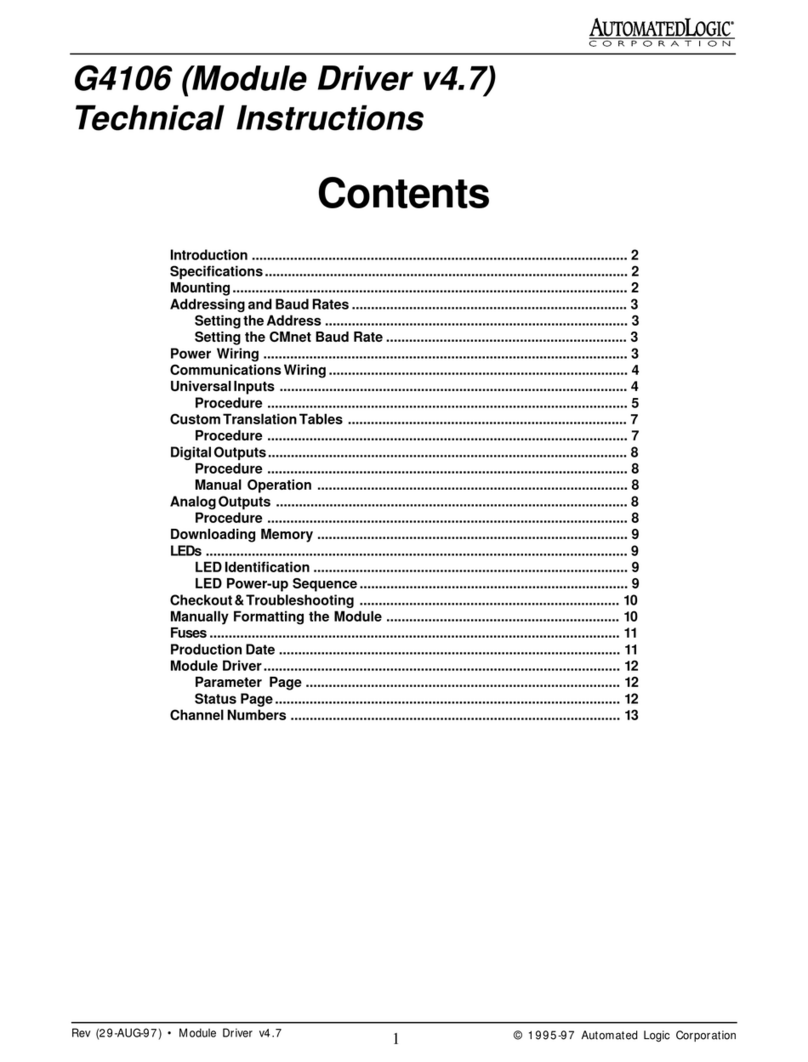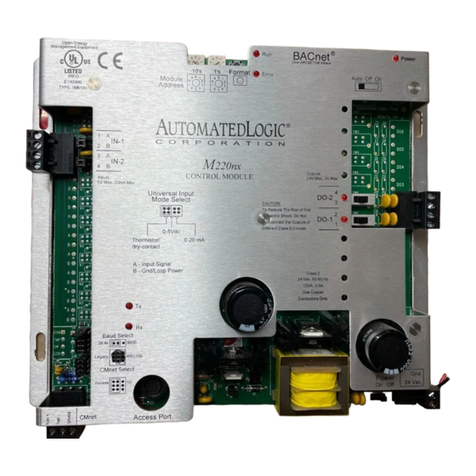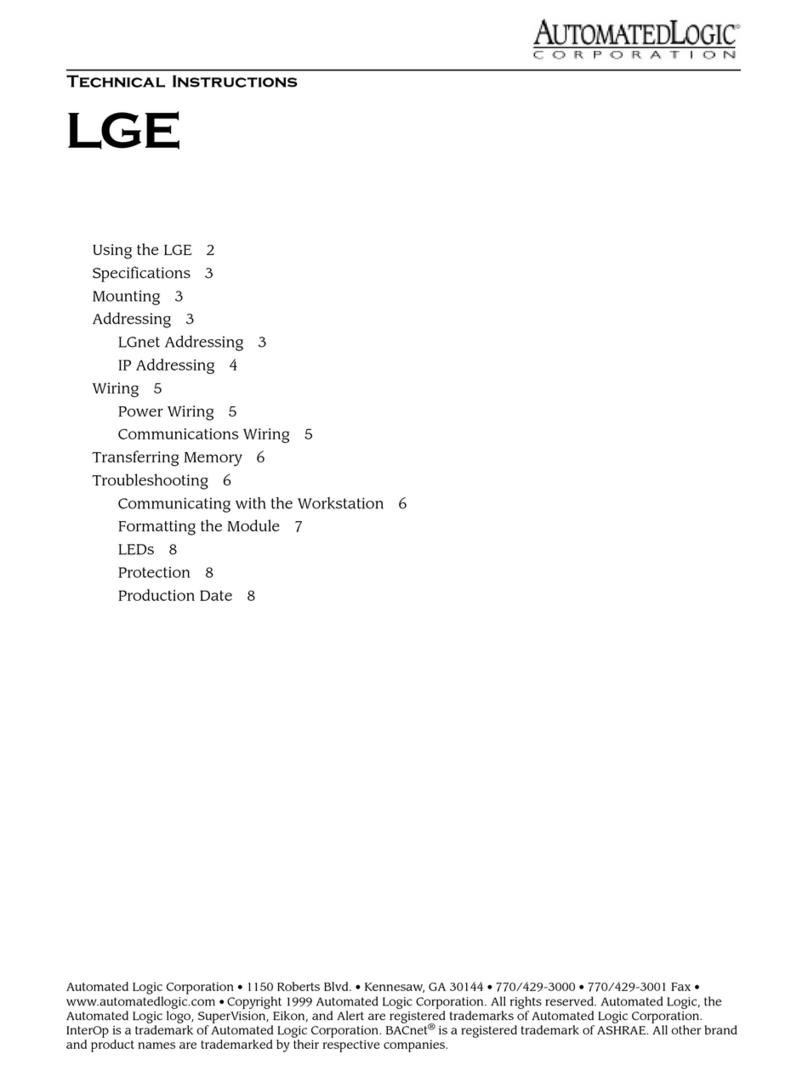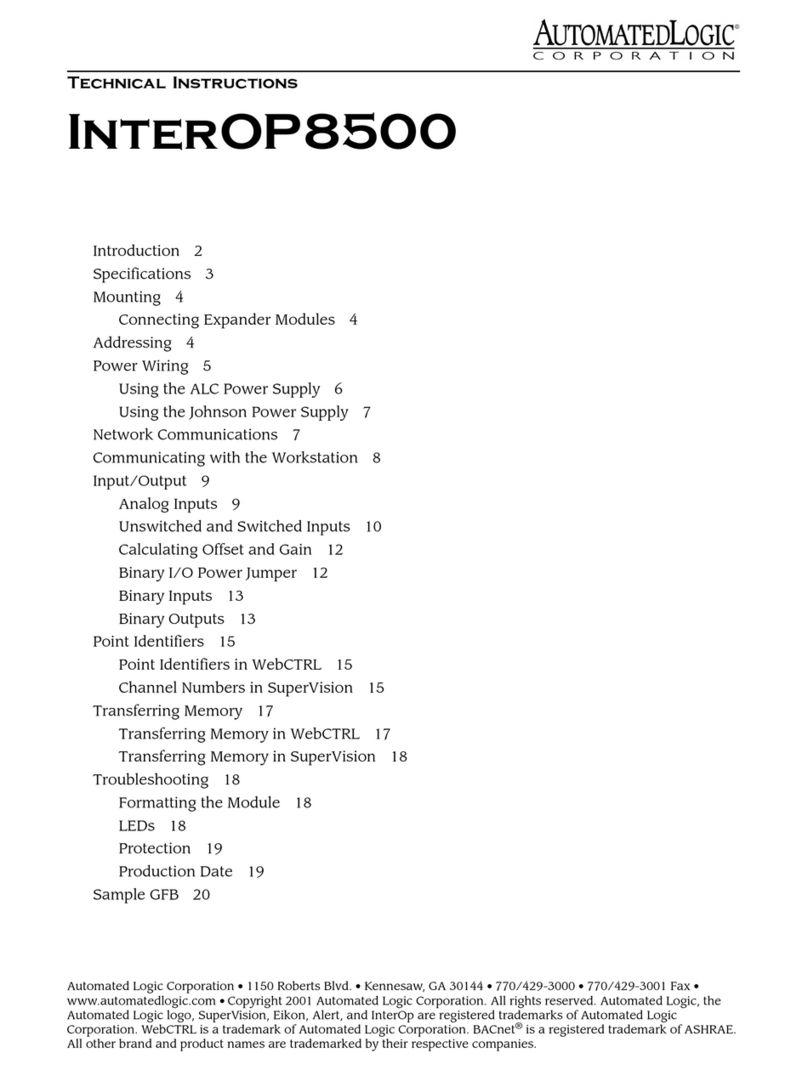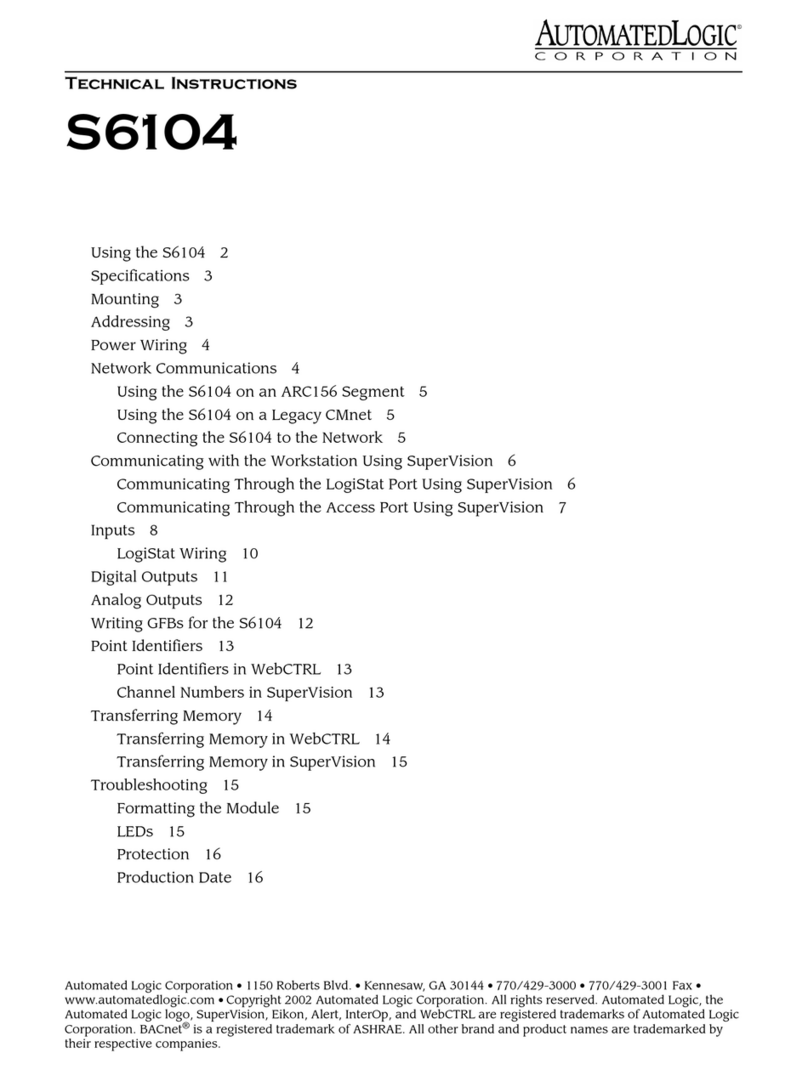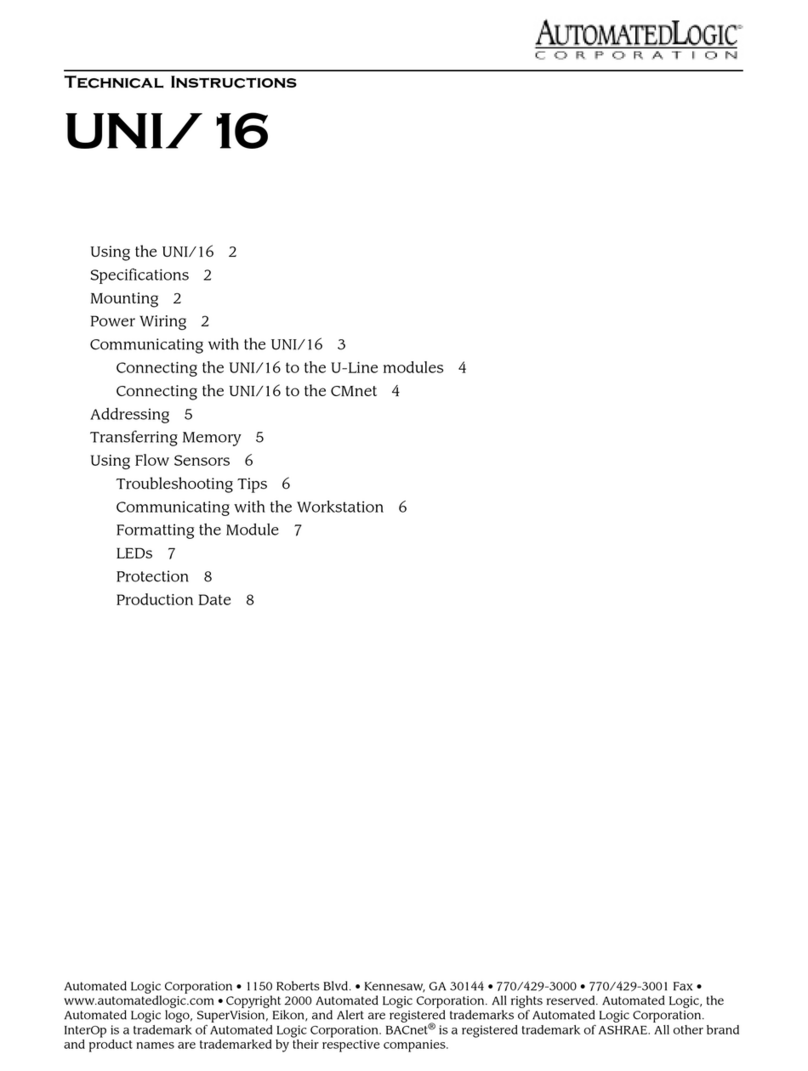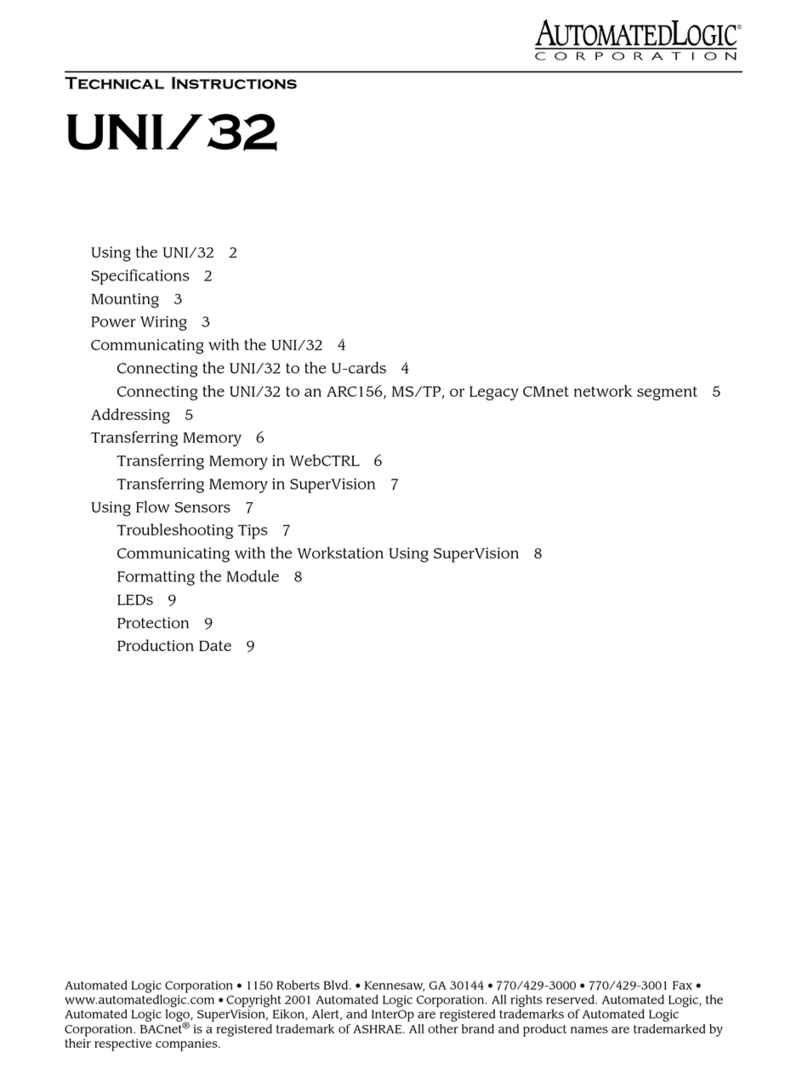
Rev. (29-JUN-99) • TNI v4.7 8©1995-99 Automated Logic Corporation
The T-Line Default Algorithm Downloader is a
communications program which enables you to download
default algorithms from your computer directly to the
T-Line modules. The computer connects with the T-Line
modules through an Opto Repeater or Tnet Adapter.
Refer to the T-Line Default Algorithm Downloader
Technical Instructions for more details.
Power and Communication Wiring
Important Notice
Avoid damaging the T-Line modules
communication circuits.
• IF you have multiple T-Line modules powered
by the same transformer,
OR
• IF you have multiple T-Line modules powered
by separate transformers, but have their grounds
connected (either through wires or through
conduit),
THEN you must observe the same polarity on the
T-Line modules’ AC-power connections.
CAUTION: The T-Line modules are Class 2 devices
(less than 30 VAC). Take appropriate isolation
measures when mounting a T-Line module in a control
panel where Class 1 devices or wiring are present.
NOTE: If wiring the T-modules together in a bus power
configuration (several T-modules sharing a single
transformer as shown in Figure 8), care must be taken in
the wiring and transformer sizing. The average current
value for a T-module is 100 mA (0.1 Amps), but the peak
current value for a T-540v with all outputs on is 670 mA.
Therefore, the wire and transformer must be sized larger
than apparent from the averaged value of the module VA
rating. See Figure 7 on calculating wire and transformer
requirements for a bus power configuration.
NOTE: To protect the Tnet communication wires,
ALC highly recommends installing TNPBs at the
beginning and end of each Tnet leg as shown in Figure
6.
NOTE: Whenever possible, terminate and verify power
and communications to all modules before terminating
any inputs or outputs.
BEFORE wiring power or communications to any
T-Line modules on the Tnet, use the following procedure.
1. Connect the 24 VAC power wires to a single T-Line
module as described in the following steps.
a. Terminate AC power at the wiring source
(usually a circuit breaker or other AC source).
b. Terminate power to the high voltage side of the
transformer.
c. Remove the T-Line's power jumper (see Figure
5). This prevents the module from being
powered up until proper voltage is verified.
d. Terminate the two power wires to the 24 VDC
and GND terminals indicated in Figure 5. Note
the polarity. See "Using Quick Disconnects"
later in this document for guidelines.
e. Verify that 24 VAC is present at the power input
and replace the power jumper.
2. Connect the Tnet communication wires to the same
T-Line module as described in the following steps.
a. Remove the module's power jumper.
b. Check the Tnet communication wiring for shorts
and grounds.
c. Terminate the Tnet communication wires to the
Tnet screw terminals indicated in Figure 5.
Note the polarity of the Tnet wires coming
from the TNPB.
d. Replace the module's power jumper.
3. Go to the next T-Line module on the Tnet and
connect the AC power wires as in step 1, using the
same polarity as on the first T-Line module. Do not
connect the communication wires yet.
4. To check for proper power polarity, measure the AC
voltage between one of the communication wires and
one of the communication terminals. If the AC
voltage is greater than 5 VAC, reverse the T-Line
module’s power wires and remeasure.
• If the voltage is still greater than 5 VAC, then
check for one of the improper wiring
configurations on page 12. Rewire the T-Line
modules according to one of the figures on
page 10 and remeasure.
